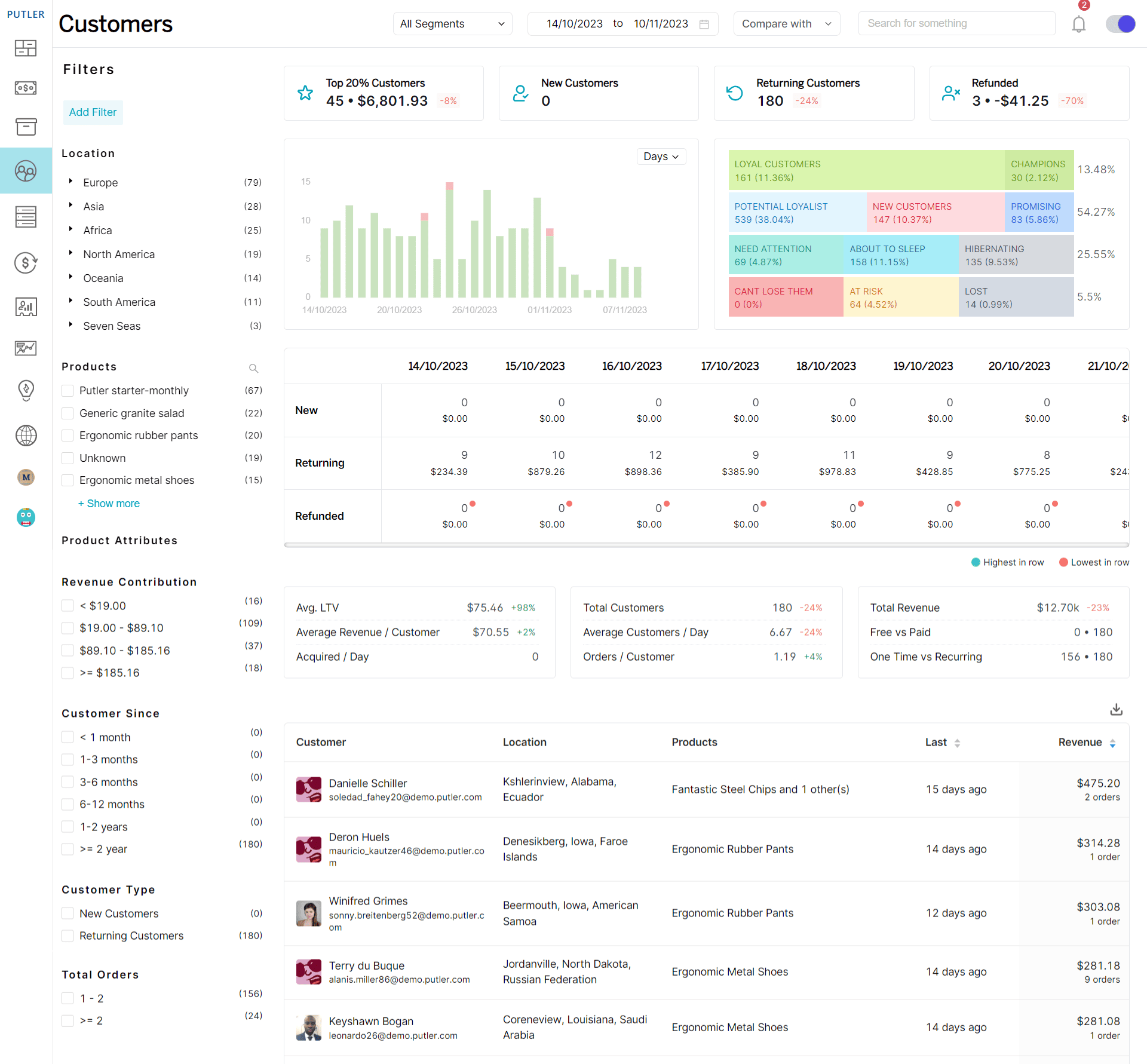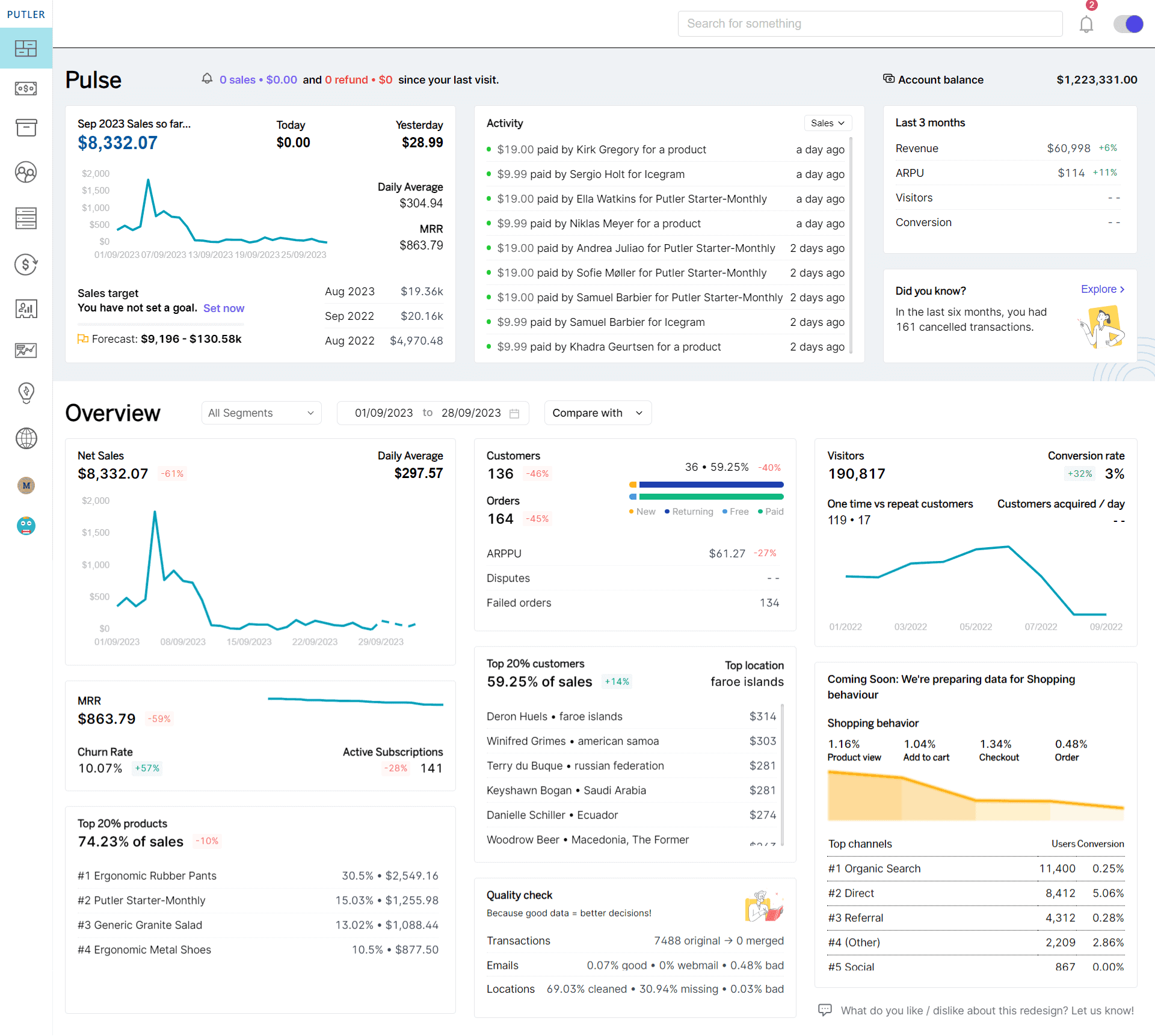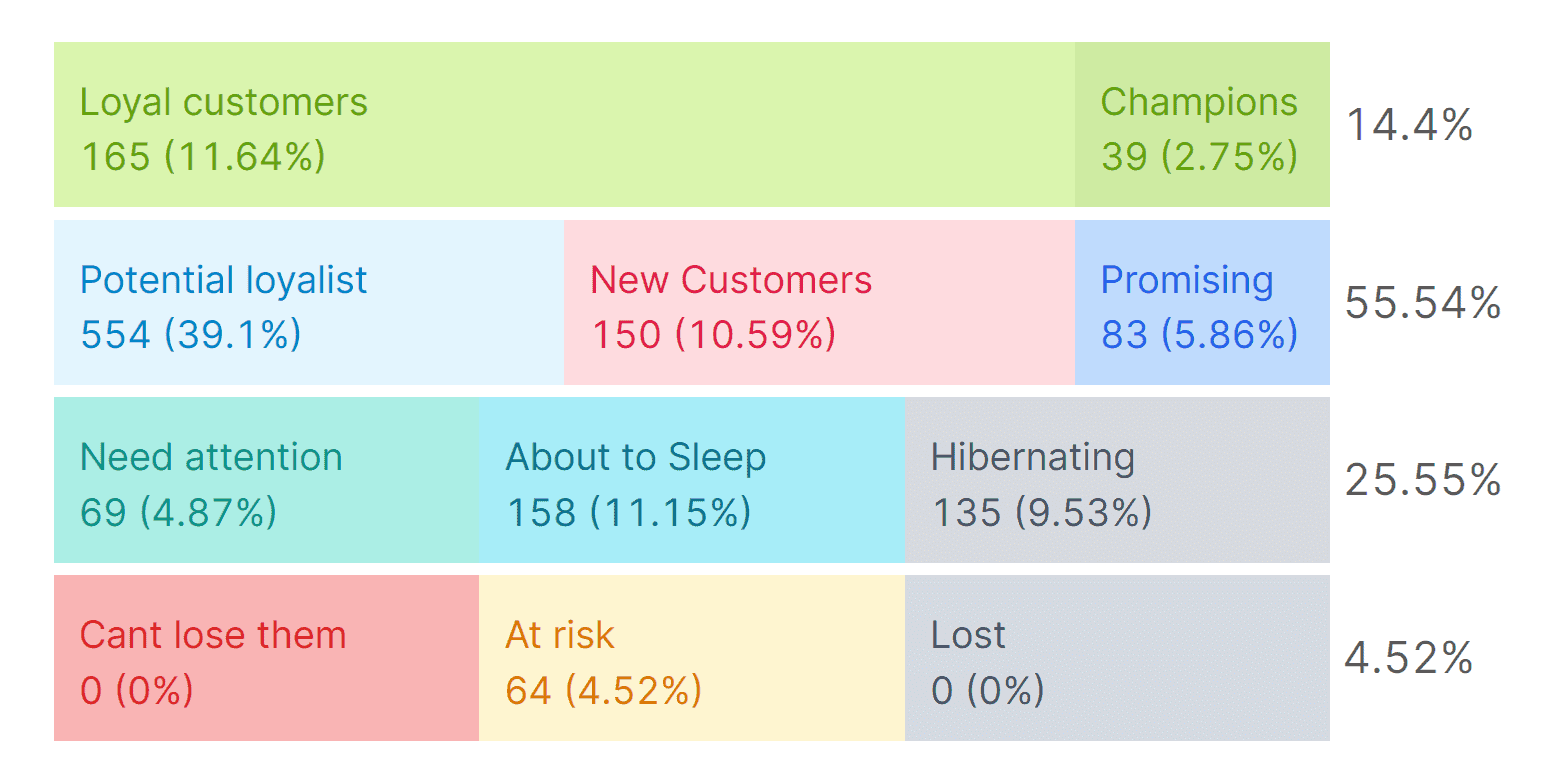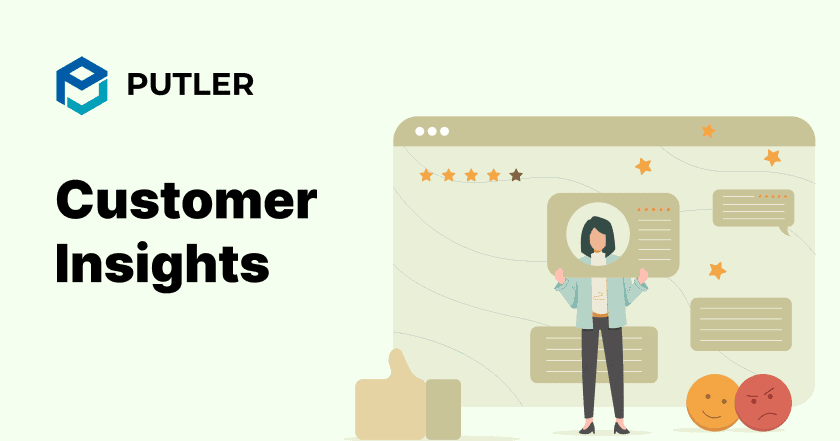In today’s business world, everyone talks about putting customers first.
But how can a business do that without knowing what customers want?
Putting customers first without proper information about their needs is just like throwing stones in the dark – some hit, some don’t.
This is where customer insights become a game-changer for businesses aiming to improve their customer experience.
But, what exactly are these insights? Let’s find out.
What are Customer Insights?
Customer insights, also known as consumer insights, are the strategic decoding of customer feedback and analytics. These insights offer businesses a clear view of customer behavioral trends and scopes for product improvement.
This fusion of quantitative and qualitative data helps improve decisions in marketing, sales, and service-related efforts. These ensure businesses navigate the market with more clarity, shaping experiences based on the objective metrics of customer interactions.
Think of it as the light in the dark, allowing businesses to hit the mark consistently and enhance the overall customer journey.
Benefits of gathering and analyzing customer insights
Gathering and analyzing customer data insights come with a goldmine of benefits. From helping businesses resonate more with their target audience to making strategic decisions, the value is incomparable. Let’s take a better look at these advantages.
- Understanding the audience’s POV
How does your target audience perceive your brand?- This is quite an important question when it comes to promoting business growth. Consumer insights act as a mirror and help you understand whether your efforts are going in the right direction or if they need a tune-up.
- Better engagement and support
Customer insights also help you see a crystal-clear view of your customers’ behaviors and preferences. This clarity allows you to improve your product features, marketing strategies, and support services with a precision-focused approach. These improvements not only help boost customer engagement but also foster lasting loyalty.
- Understanding inventory requirements
These vital insights extend beyond just mere preferences. They act as a roadmap to managing inventory. By understanding what customers want and when, businesses can optimize their stock levels, preventing overstock or shortages.
- Bridging expectations with reality
Customers often have expectations, and meeting or surpassing them is the key to satisfaction. These insights guide businesses to make sure customer feedback is not just taken but also acted upon, creating a harmonious bridge between what customers seek and what businesses deliver.
- Strategic decisions to optimize ROI
By concentrating resources on areas that resonate most with customers, businesses can ensure a better Return on Investment (ROI). Customer data insights facilitate this by guiding efficient resource allocation, boosting impact, and ultimately enhancing the overall value proposition.
- Key to outperforming competitors
Having these valuable insights in your grip can offer a distinct advantage. By consistently meeting customer expectations and adapting to their evolving needs, businesses not only stay relevant but also outperform competitors with ease.
So, it’s quite understood that customer insights present great business advantages. But where can you find these insights? Let’s understand that.
How to gather and analyze customer insights?
Navigating the journey to acquiring these vital insights isn’t easy. You need to have a very strategic selection of sources.

Let’s explore the avenues that prove most effective in understanding your audience.
Purchase activity and website data
Analyzing purchase activity can tell you about which of your products your customers love and the ones that require some improvement.
This data also provides insights into purchase patterns, including thoughtful, routine, and impulsive purchases.
When it comes to website data – demographic data of your customers (location, age, job, etc.), behavioral data (keywords that led to your product), the most engaged content pieces, and the most viewed and least bounced webpages – serve as a comprehensive toolkit for understanding your customers better.
How to collect?
To get the most insights on your purchase activity and website data, you can try using Putler.
Putler is one of the very few customer insight tools that provide you vital analytics and insights on your customers, sales, orders, transactions, website data, and a lot more, as well as a full-fledged view of your web analytics.

Also, with its RFM segmentation, you get to understand which of your buyers are your loyal customers already.
So, Putler is your one-stop tool to get all these customer insights and analytics in one place.
FYI, most tools available on the internet miss out on the web analytics part.
Online reviews
Online reviews help you get a direct understanding of what your customer wants you to know. And, these are available everywhere – on your website, on a third-party eCommerce website, or on social media platforms.
There is no doubt in the fact that positive reviews will highlight your product in front of your potential buyers. These reviews focus on what your brand/product has been doing right. But, that doesn’t mean that negative reviews are of no good.
Negative reviews can help you understand the areas or the aspects of your product that need improvement.
How to collect?
If you are an eCommerce seller, you can try looking for reviews on Google, Facebook, and Yelp. You can also look for reviews for each of your products.
These comments/reviews will help you understand what to improve in your product offerings.
For SaaS businesses, check the feedback as well as the complaints on Capterra, Trustpilot, G2, and similar other review sites.
Competitor reviews
Going through your competitors’ reviews has benefits similar to going through your reviews. It gives you a taste of your customers’ needs and purchase patterns.
From these reviews, you also get a chance to understand how well your product(s) is performing compared to theirs and the gaps you can fill with timely action.
How to collect?
Much like collecting online reviews of your brand, you can go through the review websites we mentioned in online reviews. In these reviews, you will be able to find out the features of your competitor’s products their customers are not happy about.
Once you find out the same, try making the necessary improvements to your product.
Also, you can try using Google Alerts to receive notifications of the mentions of your competitor brands. This will help you keep a tab on customer sentiments, allowing you to find out and incorporate the strengths that your competitor has and your product doesn’t.
Customer feedback and testimonials
Passive ways of getting to know what your customer thinks about your brand are okay, but things get even more real when you start with surveys.
Perform surveys to understand the real image of your brand in the eyes of the customer. This will make things even clearer about all your endeavors surrounding your brand.
Moreover, this exercise will give you a better idea about the journeys that your customers have had with your brand and their level of satisfaction with your product/service.
How to collect?
You can prepare questionnaires and send them to your buyers. Make sure you place questions strategically so that you get exactly what you want.
For instance, you can ask them questions about how they discovered your brand, how their journey has been so far, how likely would they recommend your product to others on a scale of 1-10, and so on.
When you find a group of exceptionally satisfied customers, you can even ask them for testimonials.
Social media
Social media can help you get more granular data about individual preferences and behavior.
These pieces of information can be accumulated from comments, product comparison posts, videos, etc. Also, these posts give you insights about why your product is doing well and why some people are not as happy with it.
How to collect?
Start a poll on your Instagram stories or LinkedIn or both for any new feature that’s coming up. This will give you a sneak peek of your target audience’s acceptance level for the feature.
Based on these responses, you can ask them to vote on what feature(s) would they find more beneficial. This will surely help you boost your sales for a given season.
Also, social listening tools can help you know what’s going on the internet around your brand.
Alternatively, you can obtain this data and insights from social media marketing agencies, which have all the necessary tools to analyze vast amounts of information and consolidate it into a single report.
These tactics will help you keep up with your customers with higher efficiency and understand their expectations from popular comments.
RFM segmentation

Implement RFM (Recency, Frequency, Monetary) segmentation to identify customer buckets based on their purchasing behavior.
This approach helps tailor strategies for different customer segments.
How to collect?
Utilize customer analytics tools with RFM segmentation features.
Platforms like Putler often provide this segmentation capability, allowing businesses to categorize customers based on their recency of purchase, frequency of transactions, and monetary value.
RFM not only helps in collecting user insights based on certain aspects but also helps increase the precision of marketing efforts.
Intuitive Filters
Filter your customers for demographics segmentation, identification of top spenders, and recognition of long-term customers. These segments offer a nuanced perspective, helping customize your approach for specific customer groups.
How to collect?
Leverage customer analytics tools like Putler that offer customizable filters.
These platforms often allow businesses to apply specific filters, providing a granular view of customer behavior and preferences.
Identify customer persona
If you deal in B2B, try checking out the websites of your best customers. It helps you figure out what niche they are from, giving you an overall categorical picture of your audience. This info helps create specific plans that match your perfect customer’s taste.
How to collect?
You can use tools like Putler to find out the websites of your customers.
Simply visit the customer dashboard and select your preferred segment from RFM. Now, once you have filtered your customers, visit their profiles to see their websites and identify what niche they are from.
How to apply customer insights for business growth?
So once you have performed all these, you need to take a step forward and execute them with the utmost finesse.
Let’s check out how you can do that.
Making necessary changes and A/B testing
Using all the feedback you gathered with so much effort, take them to the testing phase.
Implement them in a beta version of your product and open the floor for further feedback.
But wait, don’t make it available for everyone. Instead, target a percentage of your existing users and invite them to try out the new version.
Once they have tried out the new version, they will be more eager to give you their feedback. This is because they felt more engaged when their voices were heard and more importantly, implemented.
Now, all you are left to do is a final retouch and roll it out into the market to see your profits soar!
Sharing implementations and improvements with customers
If you deal in physical goods, you might want to go on a different route, opting out of A/B testing.
In such cases, keep your audience in the loop by communicating the implementations and improvements made based on their feedback.
Whether through newsletters, social media, or personalized messages, let them know that their voices have been instrumental in shaping a better product or service. Highlight specific changes, improvements, or new features introduced as a direct result of their insights.
This will not only strengthen your brand’s credibility but will also cultivate a sense of partnership with your customers.
By showcasing your commitment to continuous improvement, you will be able to instill confidence and loyalty among your customer base.
Quick wrap up
Gathering and analyzing customer insights is doable and game-changing, especially with a robust feedback platform in place. It bridges your business with real customer voices, enabling the seamless digital experiences they desire.
Each feedback loop, A/B test, and transparent sharing contribute to continuous improvements.
Commit to listening, evolving, and implementing changes for sustained growth.
Embrace the power of consumer insights, leverage tools like Putler, and exceed customer expectations.
FAQs
How do you measure customer insights?
Use tools like Putler to gather and analyze data from purchase activity, website metrics, and customer feedback. Employ surveys and A/B testing for a thorough understanding.
Why is it important to collect and analyze customer insights?
Customer insights guide strategic decisions, amp up engagement, and bridge the gap between customer expectations and reality, leading to better products and services.
What are some examples of customer insights I can track?
Customer insight examples include purchase patterns, website engagement, online reviews, and customer feedback. Use tools for in-depth analytics to uncover valuable trends.
How are customer insights different from market research?
Customer insights focus on individual behaviors and preferences obtained from direct interactions. Market research provides a broader understanding of overall market trends and dynamics.
